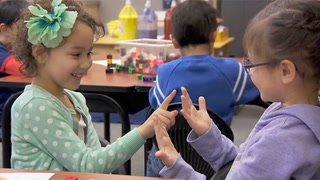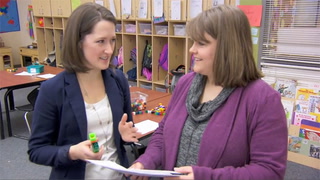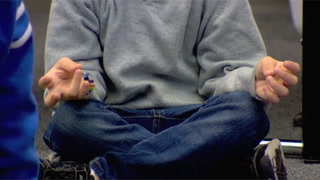Series Mathematical Modeling with Three-Act Tasks: Three-Act Tasks: Modeling Subtraction
Math.Practice.MP1
| Common core State Standards
- Math: Math
- Practice: Mathematical Practice Standards
-
MP1: Make sense of problems and persevere in solving them.
Mathematically proficient students start by explaining to themselves the meaning of a problem and looking for entry points to its solution. They analyze givens, constraints, relationships, and goals. They make conjectures about the form and meaning of the solution and plan a solution pathway rather than simply jumping into a solution attempt. They consider analogous problems, and try special cases and simpler forms of the original problem in order to gain insight into its solution. They monitor and evaluate their progress and change course if necessary. Older students might, depending on the context of the problem, transform algebraic expressions or change the viewing window on their graphing calculator to get the information they need. Mathematically proficient students can explain correspondences between equations, verbal descriptions, tables, and graphs or draw diagrams of important features and relationships, graph data, and search for regularity or trends. Younger students might rely on using concrete objects or pictures to help conceptualize and solve a problem. Mathematically proficient students check their answers to problems using a different method, and they continually ask themselves, \"Does this make sense?\" They can understand the approaches of others to solving complex problems and identify correspondences between different approaches.
Math.Practice.MP4
| Common core State Standards
- Math: Math
- Practice: Mathematical Practice Standards
-
MP4: Model with mathematics.
Mathematically proficient students can apply the mathematics they know to solve problems arising in everyday life, society, and the workplace. In early grades, this might be as simple as writing an addition equation to describe a situation. In middle grades, a student might apply proportional reasoning to plan a school event or analyze a problem in the community. By high school, a student might use geometry to solve a design problem or use a function to describe how one quantity of interest depends on another. Mathematically proficient students who can apply what they know are comfortable making assumptions and approximations to simplify a complicated situation, realizing that these may need revision later. They are able to identify important quantities in a practical situation and map their relationships using such tools as diagrams, two-way tables, graphs, flowcharts and formulas. They can analyze those relationships mathematically to draw conclusions. They routinely interpret their mathematical results in the context of the situation and reflect on whether the results make sense, possibly improving the model if it has not served its purpose.
Math.2.OA.A.1
Common core State Standards
- Math: Math
- 2: Grade 2
- OA: Operations & Algebraic Thinking
- A: Represent and solve problems involving addition and subtraction
-
1:
Use addition and subtraction within 100 to solve one- and two-step word problems involving situations of adding to, taking from, putting together, taking apart, and comparing, with unknowns in all positions, e.g., by using drawings and equations with a symbol for the unknown number to represent the problem.
Drawings need not show details, but should show the mathematics in the problem. (This applies wherever drawings are mentioned in the Standards.)
Save to My Resources
PLEASE CREATE A NEW ACCOUNT OR LOG IN TO ACCESS THIS CONTENT
Enjoy your first video for free. Subscribe for unlimited access.
Have questions about subscribing?
Click Here to learn more about individual subscriptions.
Click Here to learn more about School and Institution access.
Discussion and Supporting Materials
Thought starters
- How does Act 1 engage students with the problem?
- How are students given opportunities to learn from each other?
- How could you use Three-Act Tasks in your classroom?
In Partnership With:


Teachers
Sarah Dietz
Newest
|
4 MIN
|
5 MIN
|
5 MIN
UNCUT CLASSROOMS
| TCHERS' VOICE
English Language Arts













6 Comments
Berky Lugo Salcedo Jan 9, 2018 9:38am
Sailaja Vittaldev Oct 8, 2017 9:13am
Skylar Dolezel Feb 20, 2017 2:58pm
Araceli Valtierra Nov 13, 2016 6:29pm
Sandra Brown Sep 13, 2016 3:28pm